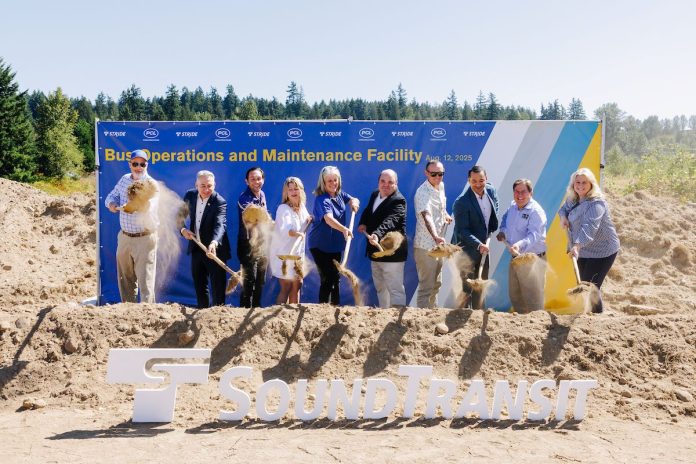
On Tuesday, Sound Transit broke ground on a new electric bus base in Bothell vital to the region’s Stride bus rapid transit (BRT) plans. The 10-acre facility within Canyon Park Business Center will initially support 48 battery electric buses serving the Stride S1, S2, and S3 lines. The $274 million base will have space to accommodate up to 120 buses, allowing the agency to expand service in the future and provide charging space for electric buses on other Sound Transit routes.
“This operations and maintenance facility will be the anchor for our upcoming 45-mile Stride bus rapid transit network, connecting 11 cities all along I-405 and SR 522 to Link light rail and to each other,” Sound Transit CEO Dow Constantine said in a statement following the groundbreaking. “It will bring dozens of living-wage jobs to Canyon Park and Snohomish County, operating and maintaining a first-in-the-nation fleet of fast, reliable, all-electric buses.”
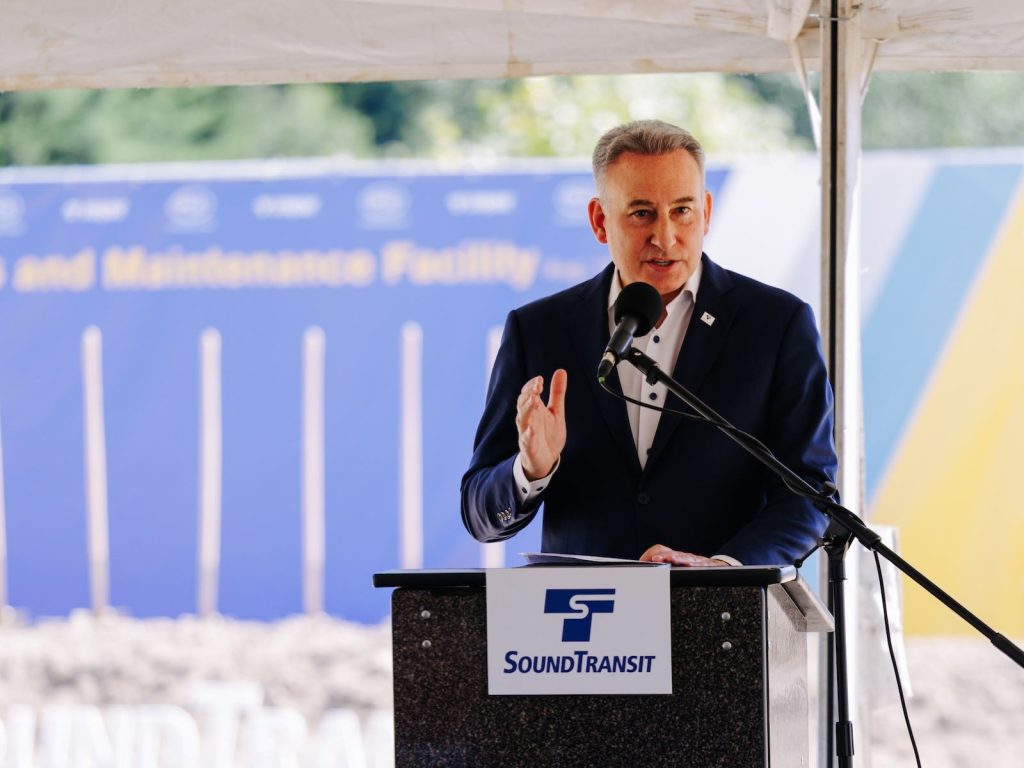
In May, Sound Transit inked the contract with Denver-based PCL Construction to build the base, as The Urbanist reported. The new Bothell Bus Operations and Maintenance Facility (OMF) will include an operations center, a vehicle maintenance facility, a 255-vehicle parking lot for employees and visitors, and charging infrastructure for the all-electric Stride fleet. That fleet consists of double-decker buses on the S1 and S2 lines, and 60-foot articulated coaches on the S3 line.

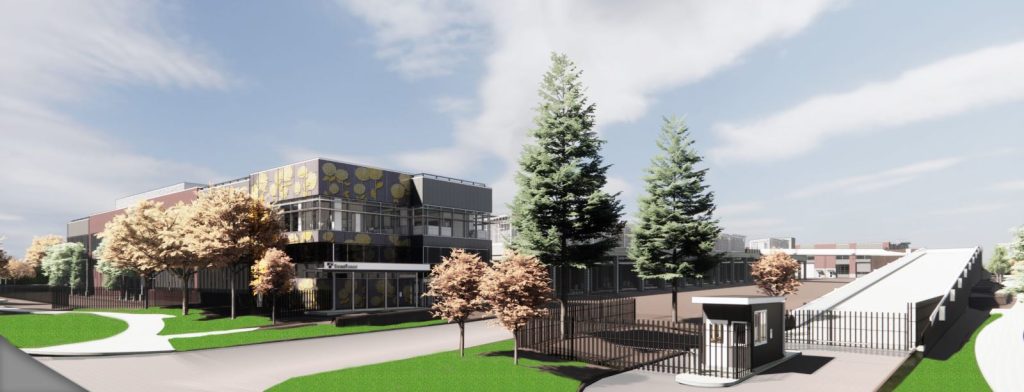
The BRT system will stitch together the Eastside with high quality bus service, and improve connections to the west and interface with the Link light rail network in Downtown Bellevue, Lynnwood, Shoreline South, and Tukwila. “Stride will dramatically cut travel times and improve transit reliability between Burien and Bellevue, Bellevue and Lynnwood, and from Shoreline to Bothell,” the agency pledged. Battery electric buses will run every 10 to 15 minutes, primarily using dedicated lanes or high-occupancy vehicle (HOV) lanes.
Stride rollout expected in 2028
The agency promised the three Stride bus lines as an early deliverable of its Sound Transit 3 (ST3) package, approved by regional voters in 2016. Sound Transit’s initial pledge to open the lines in 2024 proved overly optimistic. After a series of delays, the agency now plans to begin rolling out service in 2028.
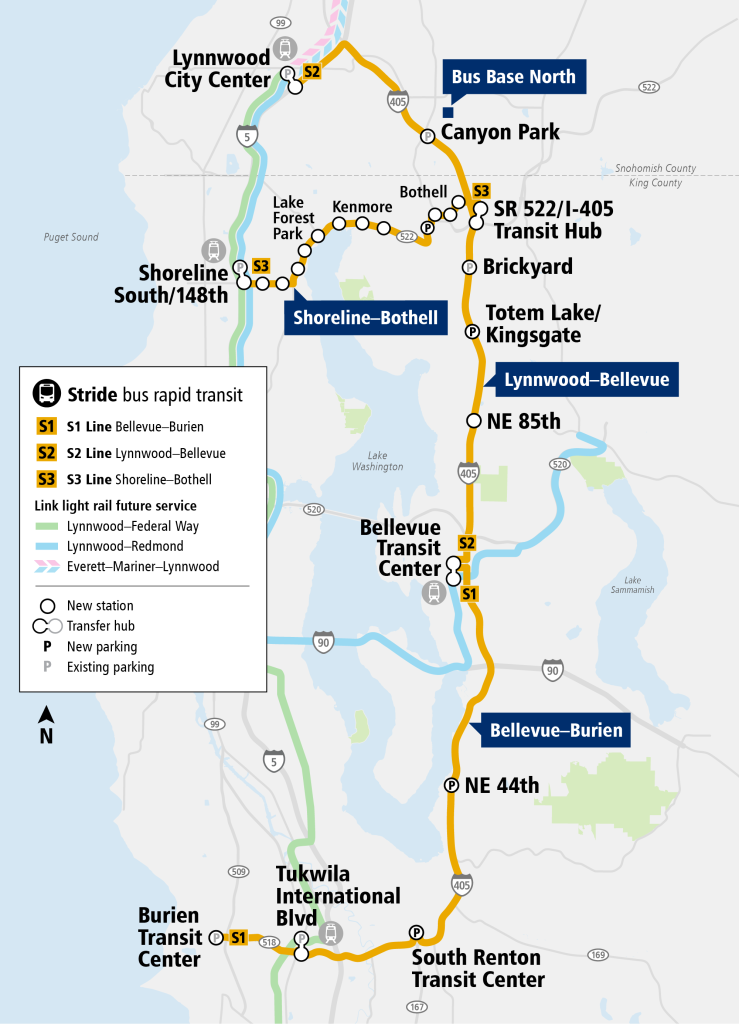
The S2 Line, connecting the corridor between Lynnwood and Bellevue, has slipped to a 2029 targeted opening. S2’s extra delay stem in part from delays to I-405 freeway construction projects onto which the Stride project was grafted. For example, Sound Transit is spending more than $287 million on the NE 85th Street/I-405 interchange in Kirkland to carve out a freeway station from a new triple-decker interchange.
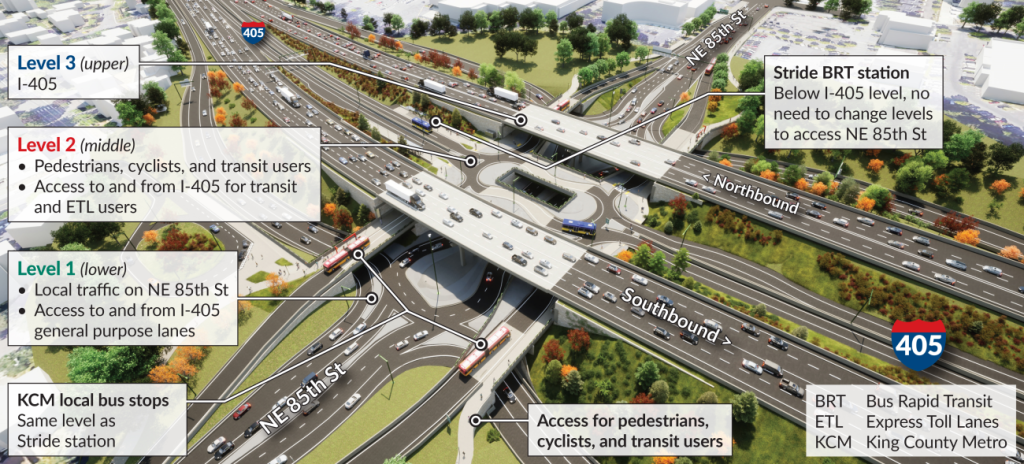
Meanwhile, delays to the S3 Line along SR 522 have stemmed from local pushback to property takings in Lake Forest Park. Sound Transit is planning to add a new lane to host its buses rather than using one of the existing general purpose lanes, adding costs and tree removal needs and creating significant procedural hurdles. Sound Transit may still end up in litigation to acquire some of the properties.
Dovetailing with Bothell plans for growth and climate action
The Bothell base is located near the S2 Line and its stop at Canyon Park Park-and-Ride. The siting nearly hit a snag since the area is within a designated regional growth center where Bothell had imposed a minimum density requirement. The bus base fell below that threshold, but the City of Bothell and Sound Transit were able to navigate the hurdle with a transfer-of-development-rights program that will maintain the growth center’s housing capacity by transferring development capacity to sites elsewhere.
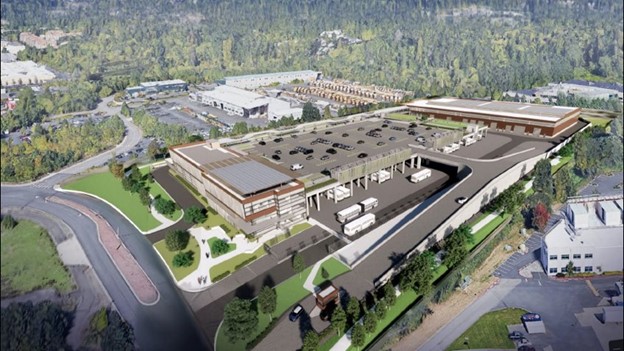
Bothell has been a leader in embracing urban development and expanding bike and pedestrian infrastructure, as Bothell Mayor Mason Thompson alluded to in his statement.
“Bus rapid transit will make it easier to move in and around Bothell and will also help us meet our climate and housing goals,” Thompson said. “We’re excited to see the impact of this regional investment here in Bothell both initially and over time.”
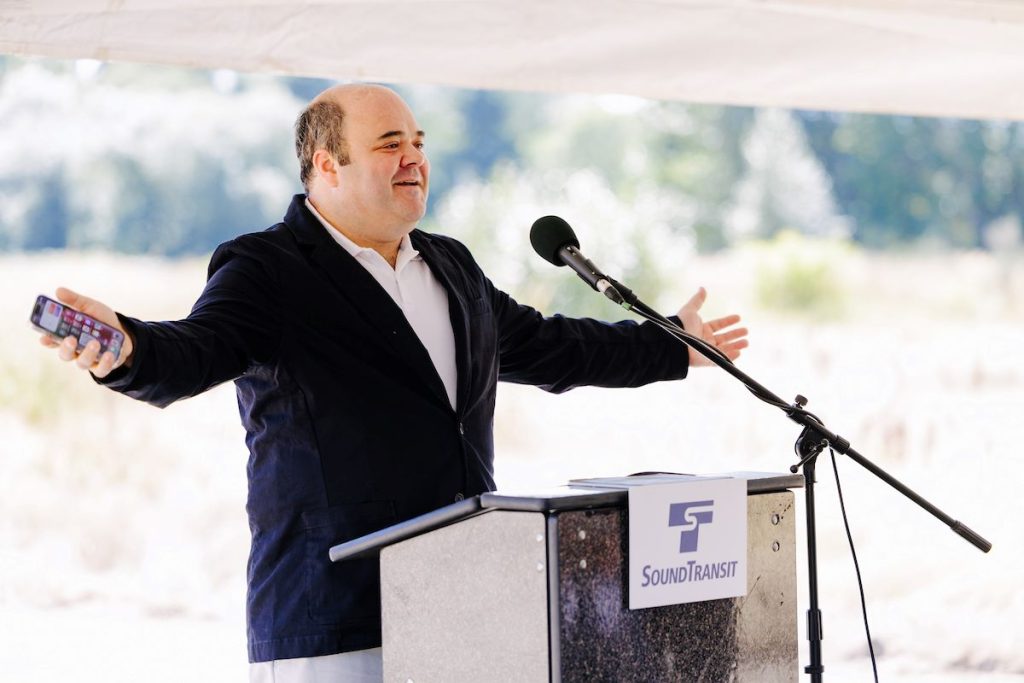
As recent ridership gains on light rail 2 Line demonstrate, the Eastside has plenty of latent transit demand, but it takes quality service to draw people out of cars. This is especially true since the eastern suburbs were generally built as car-based sprawl, without the streetcar bones that benefit more compact cities like Seattle and Tacoma. The great hope for Sound Transit’s rapid transit investments is that they can transform suburban land use and decarbonize transportation, creating a sustainable model of growth.
Sound Transit Systems Expansion Committee chair Claudia Balducci attended the groundbreaking and stressed the need for new rider carrying capacity and greener transport options. The agency has set a goal of reaching a zero-emissions fleet by 2050.
“It’s very, very exciting to be working on new capacity, and also to have a facility that will support our shift towards a green and electric bus rapid transit network,” Balducci said at a committee meeting Thursday.
While the electric buses themselves represent a shift towards green transportation, the presence of one or more major highways next to nearly every Stride station will hinder air quality, pedestrian safety, and transit-oriented development opportunities.
Concerns over battery buses, cost escalation, BRT creep
The goal to shift to an all-electric fleet hinges on continuing improvements to zero-emission bus technology. A 2024 auditor report sounded the alarm over Metro’s bus electrification plans, saying King County Metro has not accounted for the decreased service capacity and the unreliability of existing battery bus technology. Electrifying the fleet before the technology is ready, could threaten service levels and expansion plans.
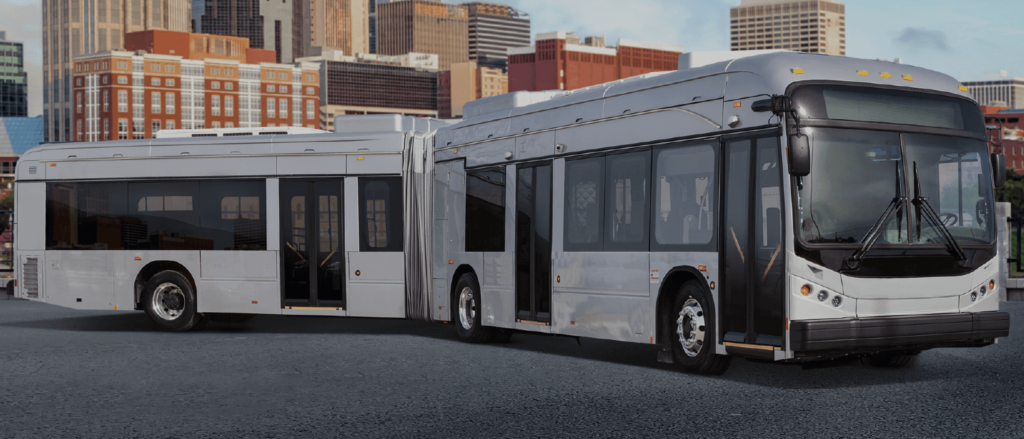
To build the first 14 articulated coaches for the S3 line, Sound Transit selected BYD, a Chinese-based manufacturer that has faced criticism for its battery buses, which other U.S. transit agencies have portrayed as underperforming and prone to maintenance issues. For S1 and S2 line, the agency plans to purchase a total of 32 double-decker buses from Alexander Dennis, a British-based manufacturer, using their Enviro500EV model.
The Trump Administration’s efforts to claw back federal grants for climate and transit projects will also be a major hurdle, particularly if this continues to be the policy of the Republican leaders over coming decades. Biden’s Infrastructure and Jobs Act had provided generous federal matching for new bus purchases and electrification investments. That has not been Trump’s policy. The dearth of federal aid expected makes future bus fleet expansion much more costly to local transit agencies.
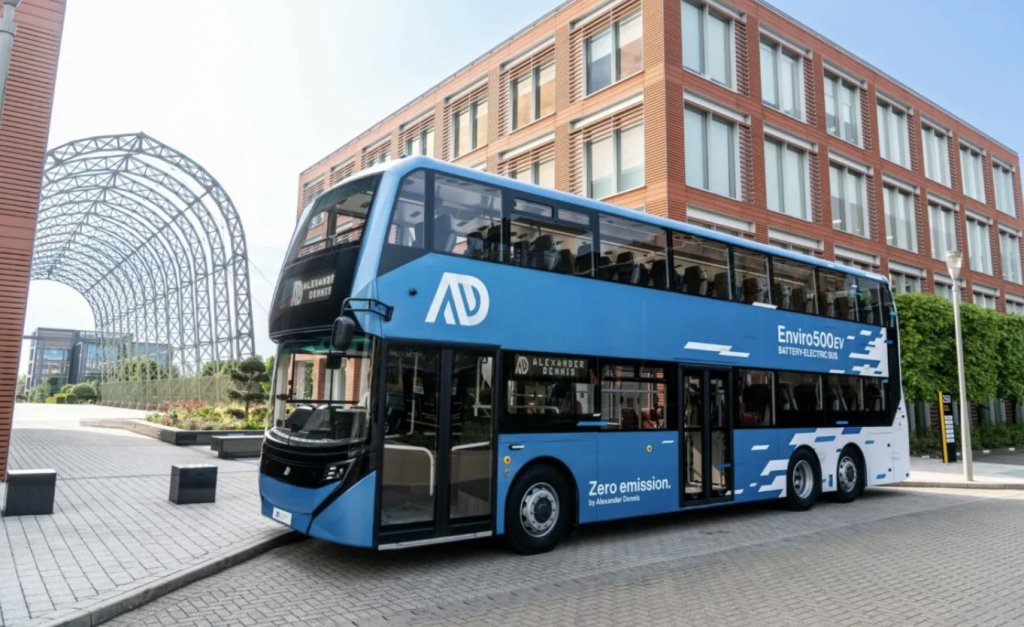
Unfortunately, the long delays and rising costs for the Stride program have also matched “BRT creep” criticism that holds that bus rapid transit projects are not immune to the pitfalls facing American rail projects, and often encounter similar issues with cost escalation, delay, and over-engineered facilities.
In 2023, Sound Transit revealed high-end project cost projections for its 45-mile Stride system had reached $2.7 billion, well above the original cost estimate range of $1.7 billion to $1.8 billion. Final costs may be higher still. While cheaper than light rail, Stride is not living up to hopes of being an affordable, quickly deployed rapid transit system.
On the other hand, the breaking of ground on the Bothell bus base makes Stride that much closer to reality. In his statement, Dave Somers, Snohomish County Executive and chair of the Sound Transit Board, pointed to the mobility benefits of the new Stride lines, as well as the “boost economic and workforce development in the area.”
“The start of construction on the new Bus Operations and Maintenance Facility for Stride is an exciting milestone that will lead to better mobility for hundreds of thousands of people,” Somers said. “Longer term, Sound Transit’s Stride network will knit together major transportation corridors so either light rail or bus rapid transit are available all along the I-5 and I-405 corridors between Everett and Tacoma.”
Editor’s note: This article was updated at 3pm Monday with the photographs from the groundbreaking ceremony.
Doug Trumm is publisher of The Urbanist. An Urbanist writer since 2015, he dreams of pedestrian streets, bus lanes, and a mass-timber building spree to end our housing crisis. He graduated from the Evans School of Public Policy and Governance at the University of Washington in 2019. He lives in Seattle's Fremont neighborhood and loves to explore the city by foot and by bike.

